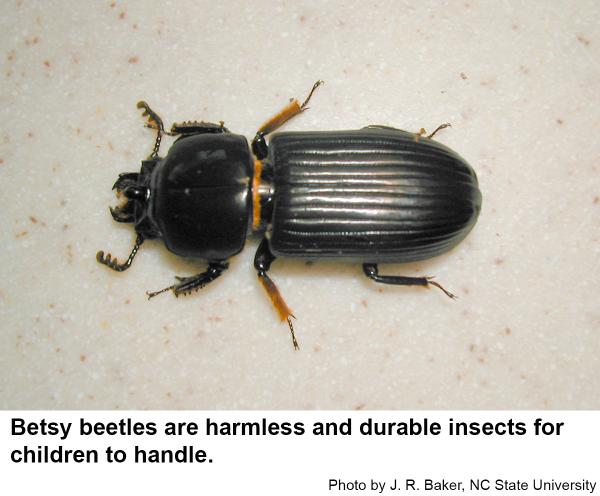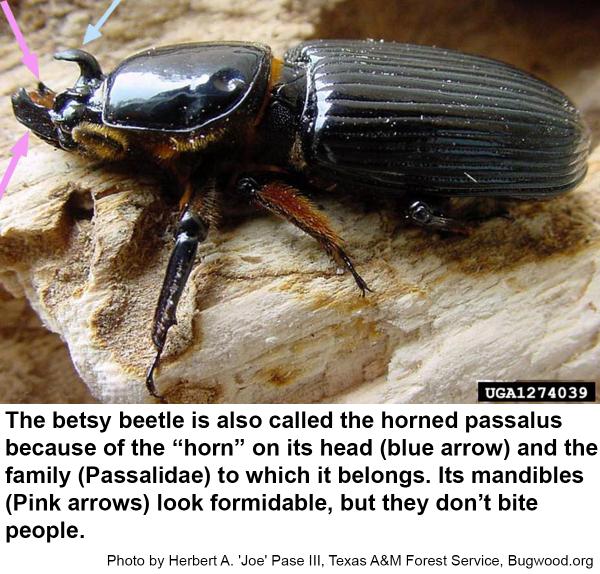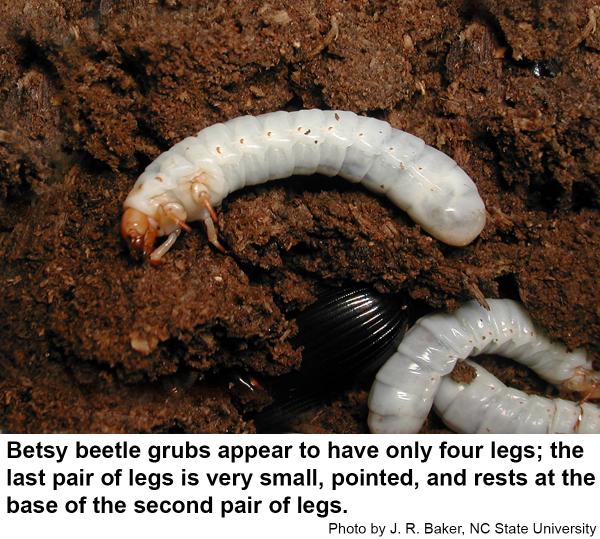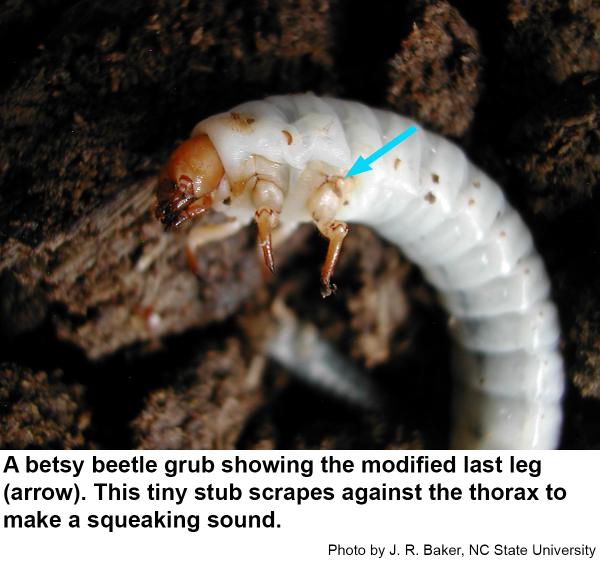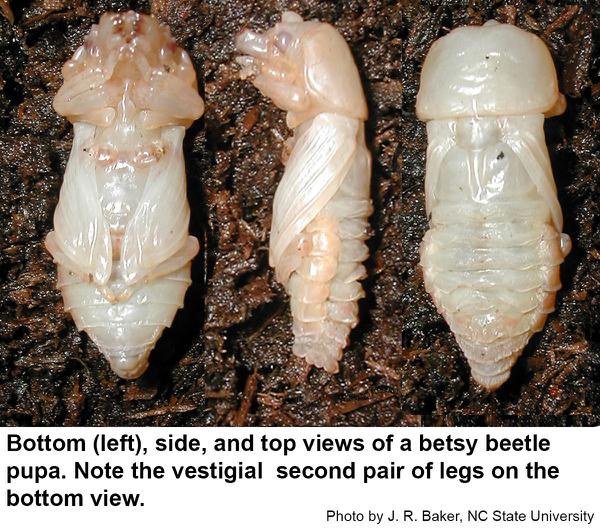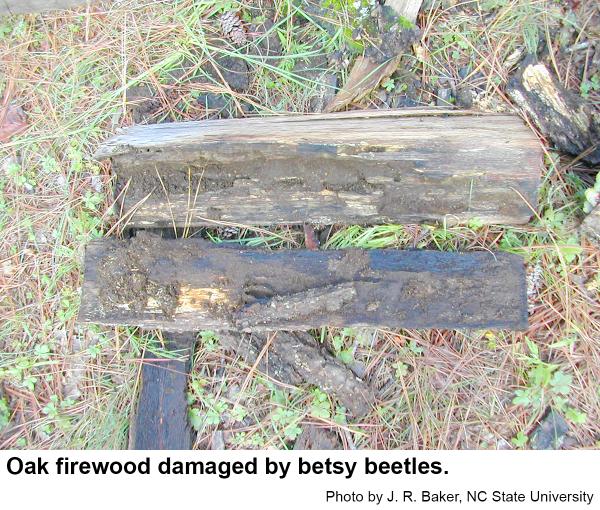Description and Biology
The horned passalus, Odontotaenius disjunctus, is also known as a betsy beetle, bessbug, patent leather beetle, Jerusalem beetle, horn beetle, and peg beetle. Betsy beetle adults are glossy black beetles up to 1½ inches long. The hardened forewings have deep grooves. Betsy beetles have a small “horn” on top of the head that curves forward. Grubs are slender and white with light brown heads. Grubs that are about to pupate construct a cell of fecal material inside of which they pupate. Pupae are white with iridescent highlights. Both parents cooperating in raising their offspring. These beetles consume large amounts of wood. After passing through the digestive tract, bacteria and fungi continue to grow on the feces making it much richer in protein than pure wood. Both betsy beetle grubs and their parents eat the feces (It is thought that the grubs are not able to chew away wood on their own). The grubs are completely dependent on their parents for food. The enhanced nutritional value of the microbes growing in the feces permits larvae to reach adulthood in only 3 months. New betsy beetles stay in the tunnels until the following spring. Each pair may raise 20 to 35 new betsy beetles. These beetles are unusual in that they communicate with their grubs. Betsy beetles have a rough spot on the top of the abdomen and the bottom of the wing covers with which they make an audible squeaking noise when picked up. The larvae have the third pair of legs modified to squeak against a rough spot on their thoraces. Betsy beetles only decompose decaying wood or logs; they are not a pest of urban structures. Likewise, these beetles are harmless to humans. They are favorites with children because of their reluctance to fly, their attractive, shiny integument and their wonderful durability. Betsy beetles live up to a year and are relatively easy to maintain as long as they have access to moist, rotting wood.
Host Plants
Any eastern hardwood that stays in contact with the soil is likely to become infested with betsy beetles but they prefer oak and elm.
Residential Recommendations
Once hardwoods start to rot, they are soon likely to be infested with betsy beetles. Firewood should be kept off of the ground and should be covered to keep it dry and rot free.
References
- Common name: horned passalus, scientific name: Odontotaenius disjunctus (Illiger) (Insecta: Coleoptera: Passalidae: Passalinae). Bibbs, C. S., A. C. Hodges, and R. W. Baldwin. 2013 (revised). Featured Creatures, Entomology & Nematology, FDACS/DPI, EDIS. University of Florida Publication Number: EENY-487.
- Infanticidal behavior in the subsocial beetle Odontotaenius disjunctus (Illiger) (Coleoptera: Passalidae). King A. and N. Fashing. 2007. Journal of Insect Behavior 20: 527-536.
- Extension Plant Pathology Publications and Factsheets
- Horticultural Science Publications
- North Carolina Agricultural Chemicals Manual
For assistance with a specific problem, contact your local Cooperative Extension Center.
This Factsheet has not been peer reviewed.
Publication date: Aug. 1, 2016
Reviewed/Revised: Sept. 24, 2019
N.C. Cooperative Extension prohibits discrimination and harassment regardless of age, color, disability, family and marital status, gender identity, national origin, political beliefs, race, religion, sex (including pregnancy), sexual orientation and veteran status.

